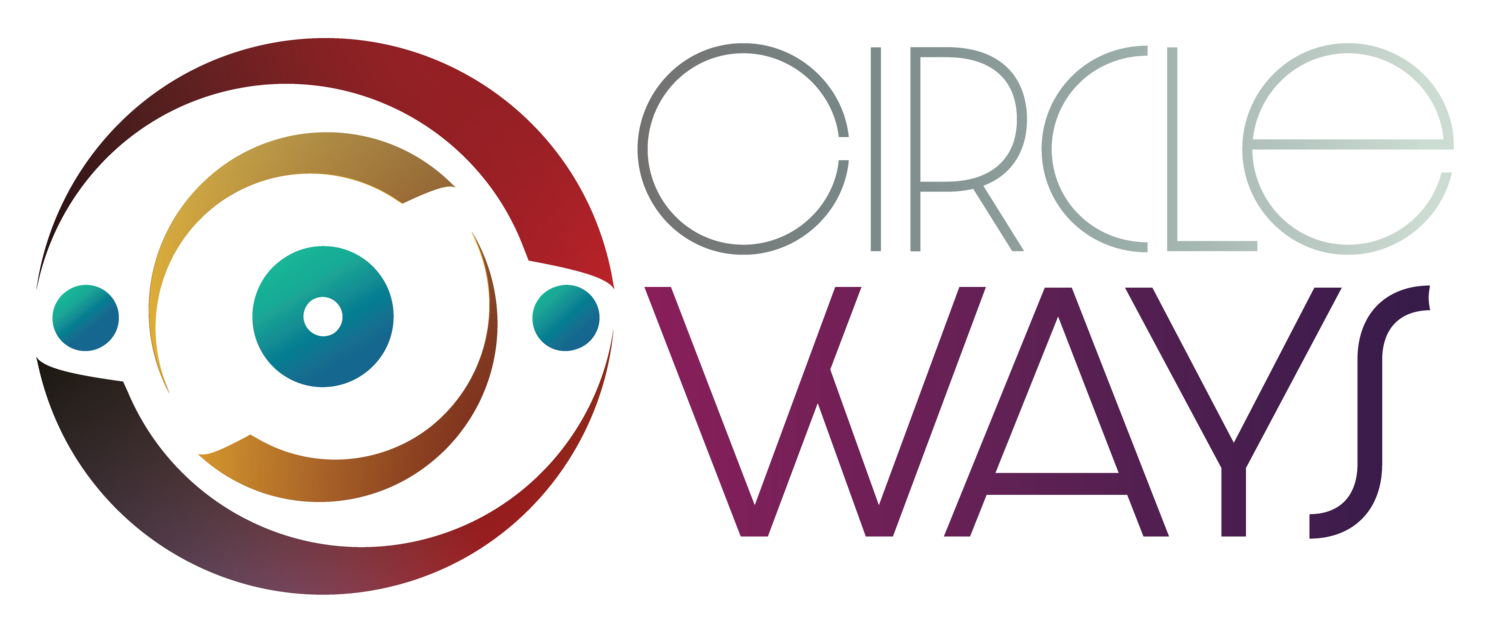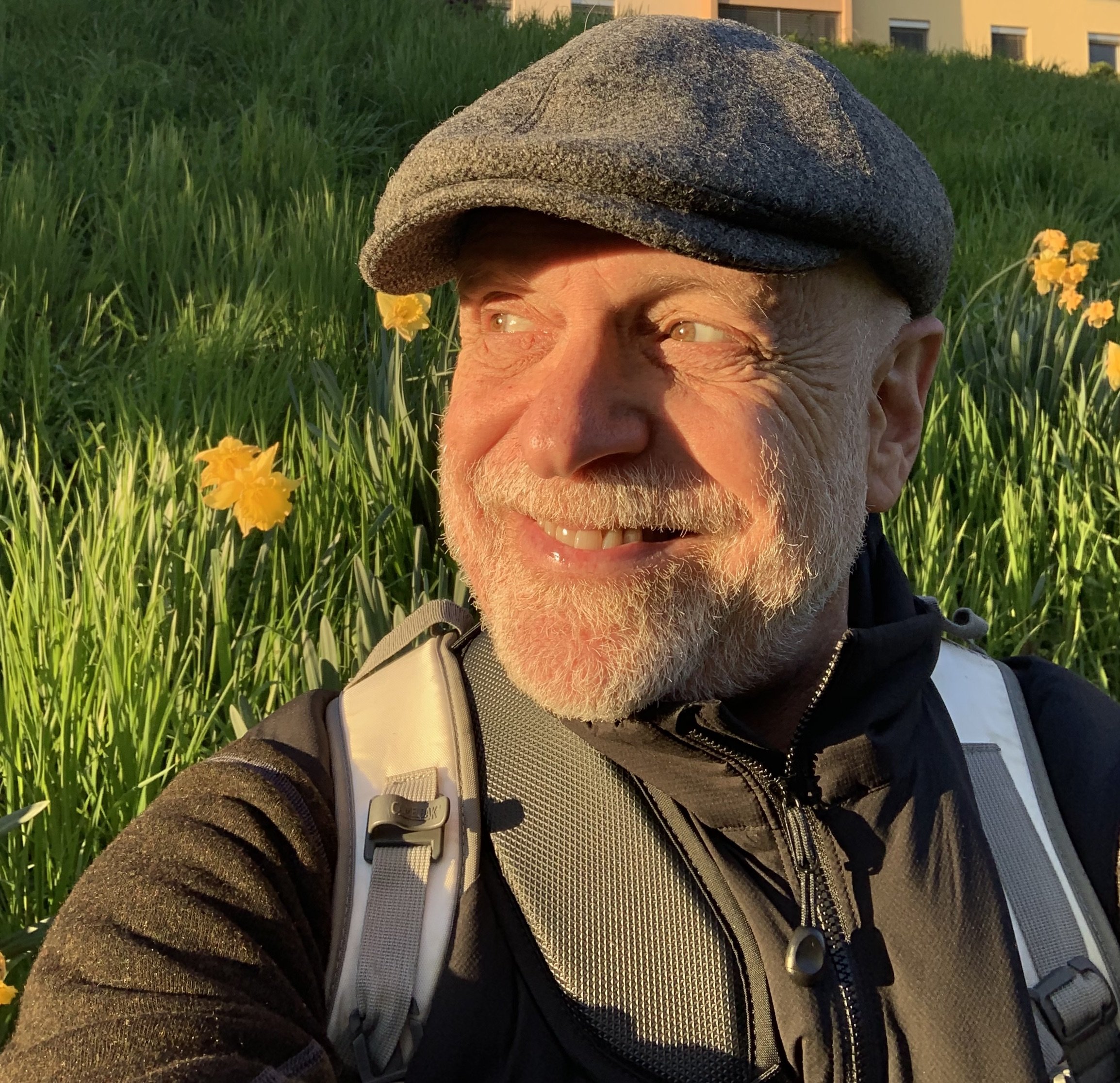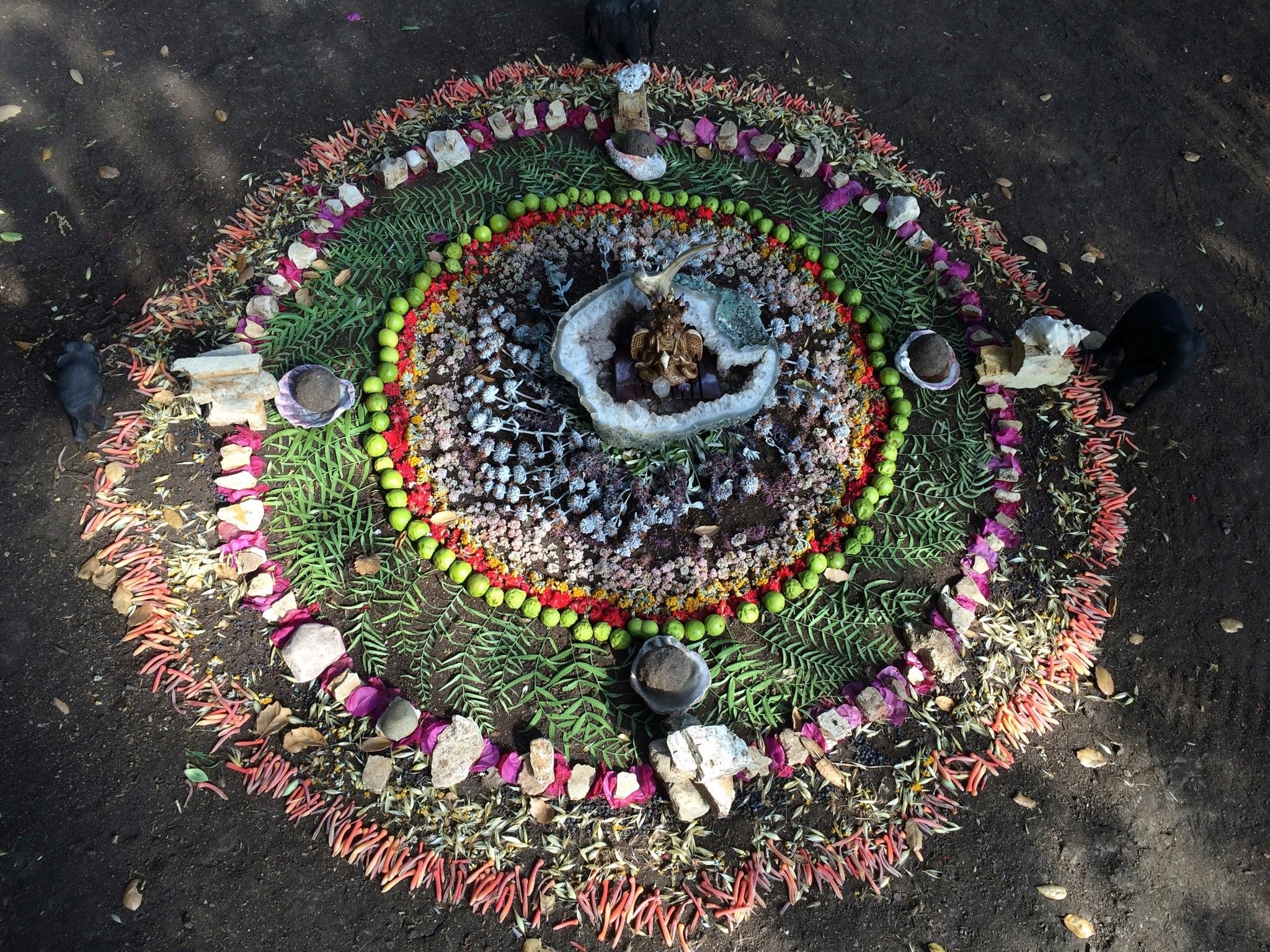Interview with Joe Provisor for the Komensky Educational Quarterly in the Czech Republic
Conducted and translated by Eva Dittingerova and Veronika Rodova
For the original version published in Czech, please use this link to the Komensky Educational Quarterly.
Joe Provisor is the co-founder of Circle Ways (2017), Council In Schools (2005), and the Palms Council Project (1992). A public school teacher for 24 years, educator trainer for Los Angeles Unified School District for seven years, and a licensed Marriage and Family Therapist, Joe has practiced circle ways in the classroom since 1986. Recognized as a Council Trainer for in the tradition of The Ojai Foundation since 1994, Joe has been providing trainings for educators, therapists, and business people nationally and internationally. He is the author of stories, training curricula, lesson plans on circle ways in schools, and the forthcoming book Circle Ways: Pedagogy in the Round.
Joe, as someone who is doing and sharing council for many years, how‘d you introduce it/explain it to our readers? What is council and how do you use it? Also, share your personal experience, how did you learn about council?
I was not born into a culture that understands circles. My conditioning emphasized rugged individualism, especially for men, a belief that to need help or advice from another person is a sign of weakness. In the US, women’s circles emerged in the 1970s, followed in the 80s by what has been called the “men’s movement.” My entry into participation in circles came through an ongoing, a “mythopoetic” men’s council inspired by the work of poet Robert Bly. In these bi-weekly circle meetings in the homes of local men, we rotated leadership with each man choosing a myth, fairy tale, dream, or poem to be presented to the group followed by the passing of a “talking piece” so each member could speak to how the archetypal elements of these offerings resonated with our individual, lived experience. This practice so moved me that I began to offer the same practice to the public middle-school students in my English classes. After witnessing the delighted response of my students to this way of approaching poetry, I knew that I would continue to offer this experience to all my classes.
At the same time, I became connected to the Ojai Foundation, a retreat center that brought together teachers from all traditions from all parts of the world. There, too, the circle became a core offering of these events. Every teacher at some point would turn the “talking piece” over to the participants in a circle to elicit how the information imparted resonated with the actual experience of each person. The collective experience of many years of such gatherings at the Ojai Foundation and elsewhere formed the substance of the book The Way of Council by Jack Zimmerman and Virginia Coyle, which has now been translated into Czech.
So, what is council? While the term “council” is a generic reference to practices that are pancultural (not solely Native American as many assume), and every culture has a name and a protocol for such meaningful dialogue, there are five commonalities shared by all: a circle, a center, a beginning, an ending, and intentions. A “council” has a beginning and a closing because what we do there requires a heightened awareness of self and other. The Way of Council emphasizes four intentions: listen from the heart, speak from the heart, speak spontaneously, and speak leanly (with an awareness of the time and the number of participants). The “center,” which is often marked with something of beauty, is a symbolic representation of the whole that is more than the sum of its parts, or, we might say, the common purpose of the group. To speak and listen from the heart is to speak honestly and to suspend judgement while another is speaking, listening for more than just the words.
I usually introduce the practice by setting up the room in the traditional rows with the lecturer in front and noting that this “triangle culture” creates a set of expectations, that the speaker knows something, and the listeners are there to passively receive. Then, we move the seats into a circle and note how this changes the dynamic of expectations, such that everyone is called to show up fully.
What is specific/special about council compared to other circle practices?
It is possible to bring a triangle pedagogy to a circle. If the teacher/facilitator is the one asking all the questions and providing clarifications and the others are directing their comments to her. What is different about the way we practice council is that once the circle has formally begun, the facilitator becomes a participant, and we, as teachers, share our age- and context-appropriate stories as models for student sharing. This requires what Paolo Freire calls a “teacher/student” attitude, where the teacher is another human being among human beings, treating the student/teachers as whole and complete. As Joseph Chilton Pierce says, “Education will forever be broken…until we stop treating five-year-olds as incomplete six-year-olds.” The emphasis in council, especially in the schools, is to facilitate students’ valuing of the truth of their own experience. The teacher may deliver “direct instruction” the rest of the time, but in the council, she listens, as the Sufi poet Hafiz says, “as if everyone were my master, speaking to me his cherished last words.”
What was the impulse for you to bring council practice into school environment?
The initial impulse came from my student’s reaction to the study of poetry. They were repulsed by the idea. I realized that the reason they did not want to read poetry was that poem had been treated as puzzles, and the object was to find the teacher’s pre-determined interpretation. After three or so years of only using council to teacher poetry in my classes, an enlightened administration at my school wanted to expand the practice to enable students to share their cultural stories and values. This came in the wake of tragedy. We were a highly diverse middle school, culturally and socioeconomically. When in Los Angeles in 1992 six police officers were acquitted of charges involving the videotaped beating of a black motorist, Rodney King, there was a violent uprising that claimed lives and property, and the resulting ripples created distrust and suspicion within the student body. The “council program” at Palms Middle School was seen as a way to address this interpersonal problem.
Later I came to see the value of the circles not only to promote social and emotional wellbeing, but as a necessary element of academic pedagogy. Since many of our schools did not have an hour a week set aside for circles, we had to look at how to integrate the practice into the traditional disciplines of language arts, social studies, math, science, etc. The demonstration of this application made it possible for many more teachers in Los Angeles to offer circles in their classes, and we have thus come to see the place of circles in a holistic pedagogy.
How does council differ from other ways of teaching? And how does council in schools differ from circles with adults?
The circles emphasize developing students’ capacity to recall and value the truth of their direct experience. We so often convey to students that they don’t really have the tools to understand what they are going through. Council is a way to create profound relevance between the lived experience of the students and the concepts we try to convey through the academic curriculum. It also supports student appreciation of what has been called “braided knowledge,” or the collective wisdom of the circle.
Circles with youth must consider developmental levels, the age-appropriateness of topics, the fact that these circles are conducted in the context of school, and the limits of confidentiality regarding revelations of self-harm or harm to others. Other than that, there is no difference between the youth and adult circles. As time goes on, the students themselves learn to facilitate the circles, and when they graduate, they take with them the portable skill of convening a group, assessing their needs, and instigating meaningful action to meet those needs.
I must emphasize that adults must experience circle practice themselves and see the value of it in their own live if they are to bring the practice to the students with any authority and authenticity. For example, if the teacher does not practice listening and speaking “from the heart,” when she asks the student to do so, they will smell a rat and not trust the process. In every school where we train the whole staff and offer a systemic program, we insist that the school managers offer regular time for staff councils that turn towards an exploration of the immediate felt-needs of the staff, what we call “educator mysteries.” Parent circle and community circles involving all school stakeholders are also essential to a systemic practice.
What does it take to be teacher/council facilitator? What are the competencies/skills needed?
A teacher needs to be able to shift as I might say from “Mr. Provisor” to “Joe,” from instructor to just another human being with stories to tell. There is a lot of fear from teachers about this, but in my experience the students manage the role shift beautifully. The same dynamic operates when school leaders participate in councils with their staff. It involves enough self-awareness and trust to navigate what I call the vertical and horizontal axes of authority. Like a writing teacher who must write, or a science teacher who must love her subject, a facilitator of council must practice council.
When we do a training workshop, we emphasize learning to apply the practice in three areas: the academic curriculum, the social-emotional field of the classroom, and student-determined needs. As there is no step-by-step council “curriculum,” teachers learn to apply the circle pedagogy to concepts within their field. They also learn to apply the process to particular social and emotional realities in the classroom and school community, such as bullying, gender issues, lack of motivation, climate, and social change, as well as losses and fears. Finally, we teach a process whereby teachers can elicit the topics of most interest and concern for the students, their own immediate felt-needs, and structure the councils around those.
Lastly, a facilitator of council must be able to bear witness to the inner lives of the children. This often means hearing stories of their pain, losses, and fears as well as what uplifts, consoles, and inspires them. In essence, they must learn to allow their hearts to break. They then face the question of what you do with a broken heart. My answer is that you associate with others who are also willing to allow their hearts to break, thus creating a bigger, more inclusive heart.
What kind of support does your organization Circle Ways offer to teachers using council in schools?
We offer three levels of training, an introduction to the circle pedagogy, an introduction to restorative practices, and an advanced facilitator practicum. We space each of these a year apart for reasons I will mention later. We also offer professional development, usually 90-minute sessions on topics such as adapting the practice for students with special needs or second language learners. We also support a “circle ways committee,” a usually self-selected group of staff members (and sometimes parents and students) who hold the heart of the practice for the school and become resources for other staff. We train this group to lead staff, parent, and community circles, and to respond to school crises as well as to use the circle to celebrate accomplishments, milestones, and transitions (such as graduation).
Could you describe some good practice - example of council implementation into school environment? Who all is involved, how, how often…?
Ideally, a school schedule offers an hour a week dedicated to circle practice. Here this is done when schools have an “advisory” or “extended homeroom.” In some private schools, the practice is offered as a part of their human development or wellness programs. Some schools even have a dedicated staff to teach in these programs If this time is not available in the school schedule, then content teachers will offer the practice weekly in their classes. In elementary school, it is easy to find this time as the teachers are with the same group of students all day. In the upper schools, a particular department will take on the responsibility at each grade level, for example: language arts in grade 9, social studies in 10, health science in 11, so that each student in the school has at least one hour a week, dependably, consistently, to be in circle. There is often a tendency to want to let circle time go when there is a big test coming or some other time crunch, but we find that circle at such times even more valuable.
You are also dealing with Restorative Practice based on council. Can you introduce it to us briefly?
“A facilitator of council must be able to bear witness to the inner lives of the children.”
JOE PROVISOR
Restorative practices have to do with healing from harm. All breaches of trust or norms are seen as harms to relationships that must be restored. Council is the foundation of a tiered intervention approach. Students learn self-regulation, personal restorative practices, then they learn skills for managing conflict so that they will often call their own peer-led councils when there is an interpersonal problem. The highest tier of intervention is a formal restorative conference which involves all who have been affected usually by extraordinary harm or breach of trust.
Here is the main point when we speak about restorative practices. They are gifts from people who lived close to the earth and close to each other, people who knew what we may have forgotten: we belong to each other, no one is expendable. When there is harm, we must heal rather than simply punish. Many schools adopt restorative protocols without understanding that they require a fundamental shift in worldview, in how we see each other. Where there is no relationship, there is nothing to restore. That is why we emphasize the implementation and practice of the circles for one full year before we teach the restorative practices. The circles are the foundation upon which the tiers of intervention rest.
Joe, you visited Czech Republic three times already, offering here workshops both for educators and public, you’ve been to Faculty of Education in Brno two times… How do you perceive the situation in Czech Republic and what are the similarities and differences you see between Czech Rep. and US?
Right now, there are a some of extraordinary people in the Czech Republic who have caught the circle bug. My hope and desire is to have an independent Circle Ways-like organization in the Czech Republic that understands the needs and particularities of implementation of the practice in schools there. My intention is to support these people. Ideally, a school like the Faculty of Education in Brno will offer a class on circles or dialogic pedagogy for educators so teachers-in-training can enter the profession with deep circle experience in their toolbox.
In my travels, I see that the interpersonal issues we face in schools here in the states are no different than those elsewhere. Some places are tradition-bound in their outlook. In the Czech Republic, I see a great need to bring marginalized populations such as the Roma into collaboration with other groups. In many ways the separation and alienation parallels what we have here with other oppressed or marginalized groups.
What is Circle Ways vision for council in schools? What are your plans?
We will continue to serve where we are called. And the good news is that many are making that call. We want to add more trainers and coaches to our team to be able to serve the growing need. There is a recognition now that if we are to survive, we must turn toward each other as we do in circles.
I began the writing in 2004, but I expect to publish my book, Circle Ways: Pedagogy in the Round, in 2020. It is a manifesto, a memoire, and a map pointing to the possibility of a circle-based pedagogy.
And what is your personal vision?
I will continue a personal circle practice with others who can hold me as a participant, and I will respond to as many calls for training and support as I can manage at this stage of life. Increasingly, as most teachers desire, I want to see others take up the practice and become the circle callers of the next generation.




